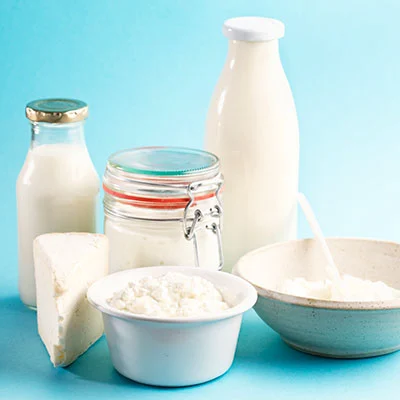Are Soft Drinks Bad for Kids’ Bones?
Parents have so many things to think about when it comes to their child’s health and safety, from keeping their vaccines up to date, to making sure they have the right car seat or bike helmet and wondering if their child is playing too many video games. It’s not surprising that their child’s long-term bone health may not be top of mind. But as the National Institutes of Health reminds us:
“Building your children's “bone bank” account is a lot like saving for their education: The more they can put away when they're young, the longer it should last as they get older.”
Providing healthy meals that include nutrients that help support bone growth, such as calcium, protein and vitamin D can help; even a child’s beverage choice can help build their “bone bank” account.
Scientists recently reviewed evidence on lifestyle factors that affect bone health in youth. Several studies indicated that drinking carbonated soft drinks was associated with reduced bone mineral content, density and strength and increased bone fractures in childhood – but why? Some investigators have hypothesized that caffeine or phosphorus in carbonated soft drinks might precipitate urinary loss of calcium. Other authors suggest soft drinks are associated with poor bone health because they displace milk in children’s diets.
When milk is displaced by soft drinks in children’s diets, it is associated with reduced consumption of calcium and other nutrients found in milk. A paper addressing the role of dairy beverages in the diet highlights evidence that children who do not drink milk often do not meet recommended amounts of calcium, vitamin D and potassium, confirming that they are not getting these nutrients from other foods and beverages.
We know that over the last 40 years, milk consumption has been declining, while soft drink consumption has increased. As children get older they increasingly turn to less nutritious beverage choices instead of milk. By age six, on average, total dairy consumption falls below recommended amounts, a trend that carries through the teen years into adulthood. So it’s important to reinforce the habit of drinking milk early, since those who drink milk at an early age are more likely to do so as adults.
The American Academy of Pediatrics (AAP) clinical report, “Optimizing Bone Health in Children and Adolescents,” reinforces the essential role of dairy foods (i.e., milk, cheese and yogurt) for children and adolescents. Recognizing that soft drinks often displace milk in children’s diets, AAP has recommended that more healthful beverages, such as such as real fruit and vegetable juices, water and low-fat white or flavored milk, replace soft drinks at school.
As health and wellness professionals, you can help educate parents, teachers and others who care for children to replace some of the nutrient poor beverages children are currently consuming with more nutrient dense sources like low-fat and fat-free milk to help build up their bone bank account. This new resource, Serve Up Bone Strength Throughout Life, may help support your efforts.














